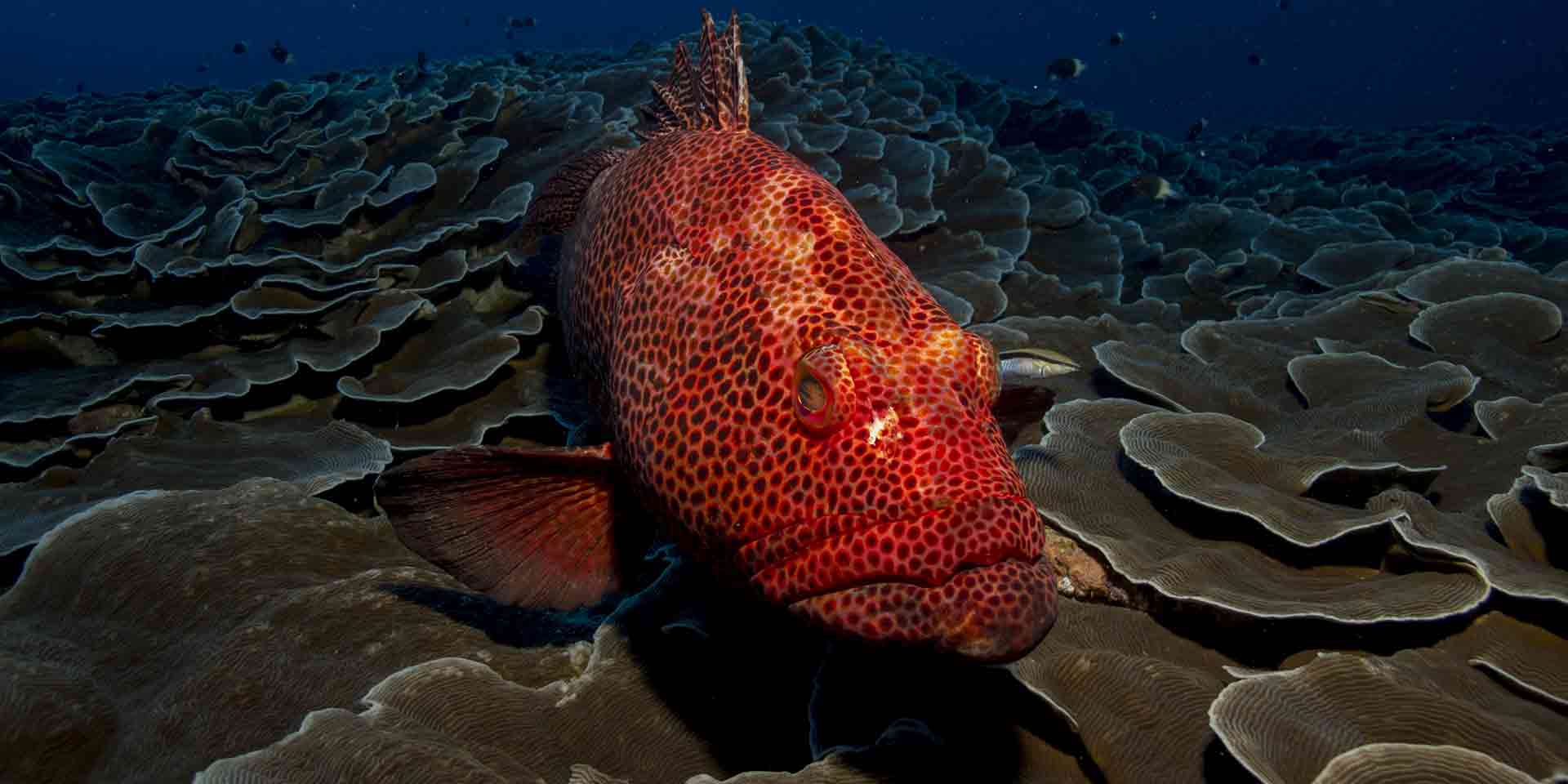King Mackerel
 Although some populations are below target levels, U.S. wild-caught red grouper is still a smart seafood choice because it is sustainably managed and responsibly harvested under U.S. regulations.
Although some populations are below target levels, U.S. wild-caught red grouper is still a smart seafood choice because it is sustainably managed and responsibly harvested under U.S. regulations.
Appearance
- Red grouper have robust bodies with small scales.
- Their head and body are dark reddish brown, shading pink or reddish below with occasional white spots on the sides and black spots on the cheeks.
- They have large mouths with a lower jaw that often projects slightly beyond their upper jaw, with bands of slender, sharp teeth, and usually a few stout, fixed canines.
- Their large mouths allow them to eat their prey whole.
Biology
- Red grouper grow slowly, up to almost 50 inches long and more than 50 pounds.
- The oldest recorded red grouper in the South Atlantic was 26 years old and the oldest recorded in the Gulf of Mexico was 29 years old.
- They are protogynous hermaphrodites – they begin life as females and sexually mature when they reach 4 to 6 years of age. Some later transform into males, most often between the ages of 7 and 15. The proportion of males in the population increases with age.
- They spawn frequently, close to 26 times a year, in shallow waters from February through June.
- Red grouper feed on a wide variety of fish, octopus, and crustaceans, including shrimp, lobsters, and mantis shrimp.
- They are among the top predators in reef community food webs and may control some aspects of community balance in reef systems. Red grouper are unspecialized and opportunistic feeders – they eat any convenient prey. They engulf prey whole by opening their large mouths, dilating their gill covers, rapidly drawing in a current of water, and inhaling the food.
- Smaller grouper are preyed on by the same predators that eat snappers, including jacks, other groupers, sharks, barracudas, and morays. Large sharks and carnivorous marine mammals prey on adult red grouper.
Where They Live
- Red grouper are found in the western Atlantic Ocean from Massachusetts through the Gulf of Mexico and south to Brazil.
Management
- NOAA Fisheries and the South Atlantic and Gulf of Mexico Fishery Management Councils manage the red grouper fishery:
- In the South Atlantic, managed under the Snapper-Grouper Fishery Management Plan:
- Commercial fishermen must have a permit to fish, land, or sell red grouper. Managers limit the number of available permits to control the number of fishermen harvesting red grouper.
- Annual catch limits are used for red grouper in the commercial and recreational fisheries. These fisheries are closed when their annual catch limit is projected to be met.
- Both the commercial and recreational fisheries have size limits to reduce harvest of immature red grouper.
- The commercial and recreational fishing seasons are closed from January through April to protect red grouper during their peak spawning period.
- Gear restrictions are used to reduce bycatch and protect habitat.
- There are eight deep-water marine protected areas and several spawning special management zones to protect habitats. The Oculina Experimental Closed Area is closed to fishing for and possession of all snappers and groupers to protect deepwater coral habitat and the reef fish it supports.
- In the Gulf of Mexico, managed under the Reef Fish Fishery Management Plan:
- Commercial vessels must have a reef fish permit and individual fishing quota (IFQ) to harvest red grouper.
- The annual catch limit is allocated between the commercial (76 percent) and recreational (24 percent) fisheries.
- The IFQ program (catch shares) allocates the commercial catch limit among shareholders with measures to prevent fishermen from harvesting more than their individual allocation.
- To reduce bycatch, there are restrictions on the type of gear fishermen may use and where they can fish.
- Minimum size limits protect immature red grouper.
- Year-round and/or seasonal area closures for commercial and recreational sectors to protect spawning groupers.
- Commercial data reporting requirements.
- In the U.S. Caribbean:
- Annual catch limits.
- Seasonal closure from February 1 through April 30.
- In the South Atlantic, managed under the Snapper-Grouper Fishery Management Plan:

